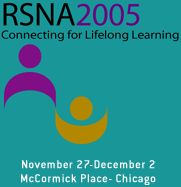
Abstract Archives of the RSNA, 2005
Stephen Hesseltine MD, Presenter: Nothing to Disclose
Meng Law MD, Abstract Co-Author: Nothing to Disclose
Scott Lopez BS, Abstract Co-Author: Nothing to Disclose
Marz Rad, Abstract Co-Author: Nothing to Disclose
James Babb MD, Abstract Co-Author: Nothing to Disclose
Glyn Johnson PhD, Abstract Co-Author: Nothing to Disclose
Diffusion tensor imaging (DTI) has been demonstrated to provide physiologic information regarding fiber tract integrity and diffusion on a microscopic level. Information provided by DTI may prove useful in the neurosurgical triage of patients with cervical spondylosis. The purpose of this study is to spatially compare diffusion tensor metrics of white matter tracts in the cervical spinal cord in normal volunteers with metrics in patients with radiculopathy and myelopathy.
DTI was performed in 49 patients with varying degrees of spondylosis and 27 healthy volunteers, using pulsed gradient, double spin echo, echo planar imaging (2000/74; 128x128 matrix; 140x140 mm FOV; ten 4 mm slices with 0 gap; b= 1000 s/mm2) at 1.5T. We evaluated the DTI characteristics of the spinal cord at the C2-3 level. At this level, fractional anisotropy (FA) and mean diffusivity (MD) were calculated within regions of interest at the anterior, lateral, and posterior regions of the spinal cord, with separate bilateral regions of interest at each of these positions.
The MD values in all regions of the spinal cord were significantly higher in the patients with spondylosis compared to controls (p < 0.001 anteriorly, p = 0.03 laterally and p = 0.009 posteriorly). There was no significant difference in FA in any region of the spinal cord comparing disease group to controls. The anterior FA values were significantly lower than the posterior FA values in both the patients with spondylosis (p < 0.001) and controls (p < 0.001).
The study suggests that changes in MD are present in the spinal cord even remote from the site of spondylosis. Regional differences in FA in the cervical spinal cord are also demonstrated, with significantly lower FA in the anterior compartment. The changes in spondylosis may relate to direct mechanical stress or a vascular phenomenon. These findings may be valuable in future investigations of DTI characteristics at the site of pathology in patients with spondylosis as well as help in the neurosurgical triage of patients with degenerative cervical spine disease.
Hesseltine, S,
Law, M,
Lopez, S,
Rad, M,
Babb, J,
Johnson, G,
Diffusion Tensor Imaging in Cervical Spondylosis. Radiological Society of North America 2005 Scientific Assembly and Annual Meeting, November 27 - December 2, 2005 ,Chicago IL.
http://archive.rsna.org/2005/4417363.html

